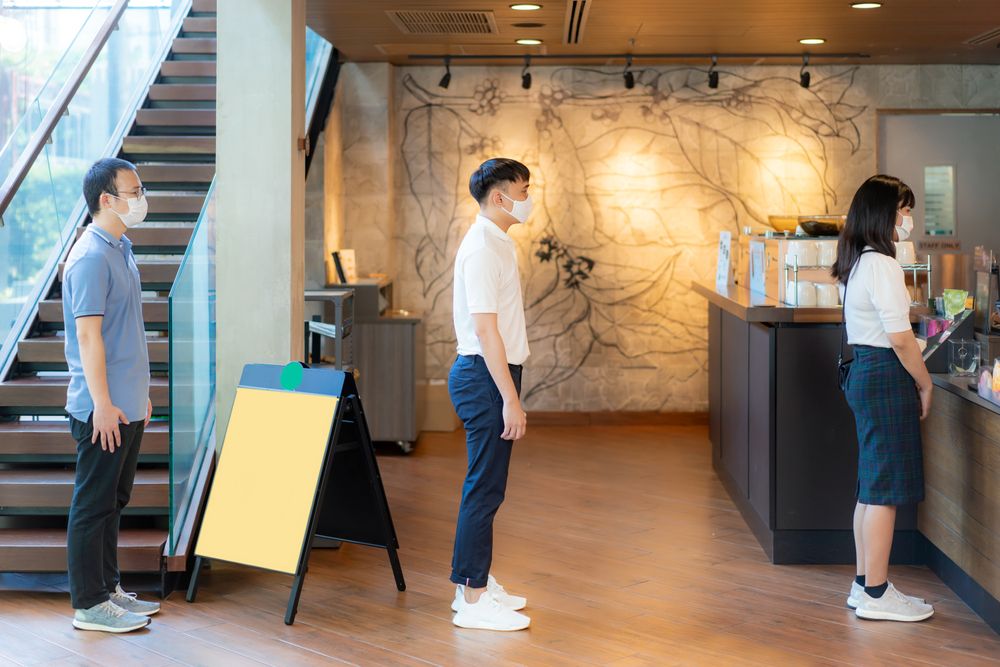Getting restaurant customer service right is tough. Busy periods might be great for business, but managing the long lines that accompany them can be a deal breaker. A long line broadens the gap between wanting service and getting it. Just seeing a line is sometimes enough to turn people away.
People are becoming increasingly impatient—and technology is playing a role in that. "Changes in technology, especially self-service machinery...have meant people may be even less tolerant of queues," the Norwegian Business School notes.
In other words, lines were rough before—but they're even rougher now, thanks to the convenience made possible by tech.
Luckily, tech can be part of the answer, too.
Ordering a table and ordering from the table.
There are generally two types of restaurant lines: a line to get a table in a restaurant, and a line to order at a counter.
Neither is great for restaurant customer service, but both can be (at least partially) solved with clever tech.
With an online reservation system, your guests can see what's available and book a table online, or add themselves to your waitlist, on the way to your restaurant. They save the time they would've spent standing in line, and you keep your lines short and enticing to walk-in guests.
If you're looking to eliminate counter lines altogether, a handheld mobile ordering device that uses QR codes can let your guests order right at their tables. You can also keep your drive-thru lines in check by having guests order while waiting in line in their cars.
Having guests order directly from the tables or cars means long lines won't gum up service. And if a virtual line builds up, you can handle that on the back end without your guests ever knowing.
Explaining the wait.
Part of the agony of a line is not knowing how long it will take to get what you want—or why there's a line in the first place.
An unexplained wait feels longer than an explained wait, according to the World of Work Project, because most people want to see the light at the end of the tunnel.
If you can't shorten the line, the least you can do is make sure your guests know how long their wait will be. Don't leave your guests in the lurch and trying to do mental gymnastics while their stomachs rumble.
If nothing else, at least offer your guests some context. Let them know why their wait is so long, and give them frequent updates on wait times. Better yet—take their information, put it in your reservation system, and text them confirmations and updates.
Explaining wait times reinforces that your restaurant has a sharp focus on the guest experience. If you can explain wait times and keep lines moving, you'll be cooking with gas.
Moving things along.
What if your guests could get their orders in while they're in line?
With a mobile point-of-sale terminal, they can.
What's the benefit of having people order their meals while they're still waiting?
For one, it gives your guest a sense of progress. They're not just waiting—and they'll genuinely get their food sooner. In a purely analog world, your guests would have to wait until they reached the front of the line to order their food. But with a mobile point-of-sale terminal, guests can trim wait times and get their meals when they get to the front of the line.
And when you inform your guests of the wait time and give them the ability to lock in their orders, they're free to do other things while they wait. They can go off and run errands nearby. When they get back, their food will be close to ready.
A productive wait will beat an unproductive wait every time.
Improving the customer experience.
Managing busy periods and long lines often comes down to two things: fulfilling orders quickly and making waits as short and smooth as possible.
Solving for the first is self-explanatory: the faster your staff can fulfill orders, the sooner your customers get their food, and the shorter your lines get.
The second is a bit more complex. But with the right tech, you can shorten lines, manage busy times effectively, and give your guests the swift experience they expect and deserve. You're moving quickly and exceeding customer expectations—why not get tech that can do the same?











